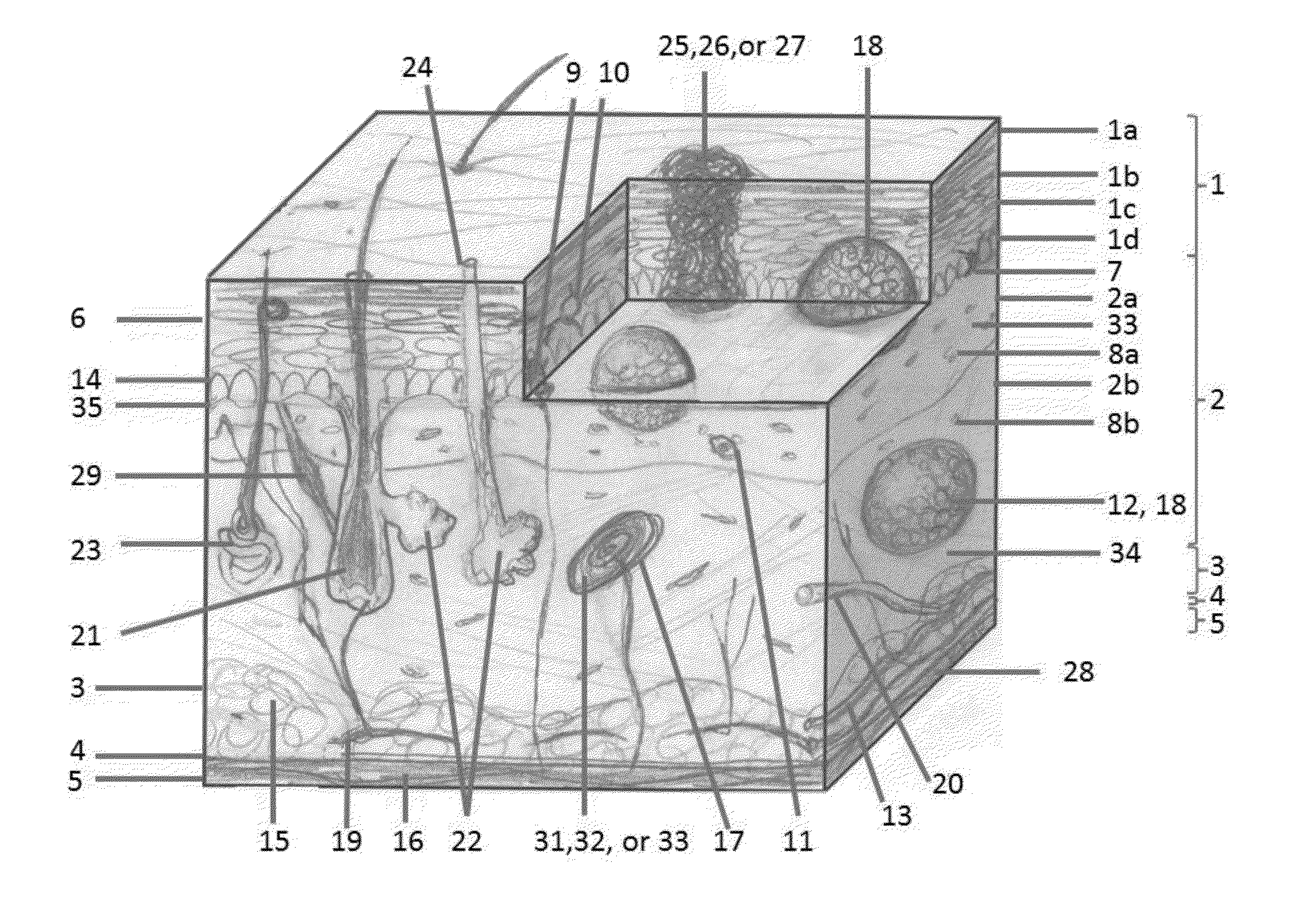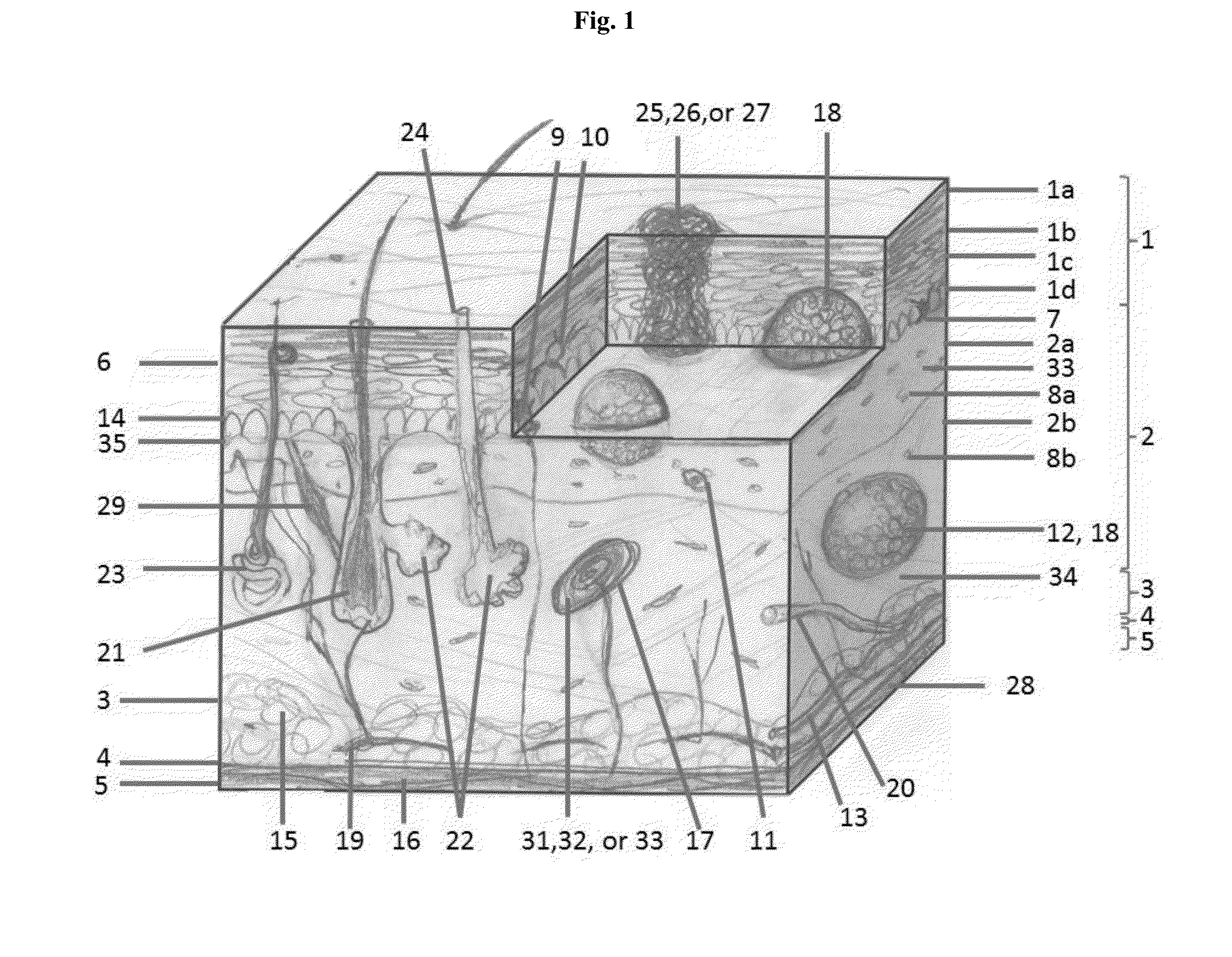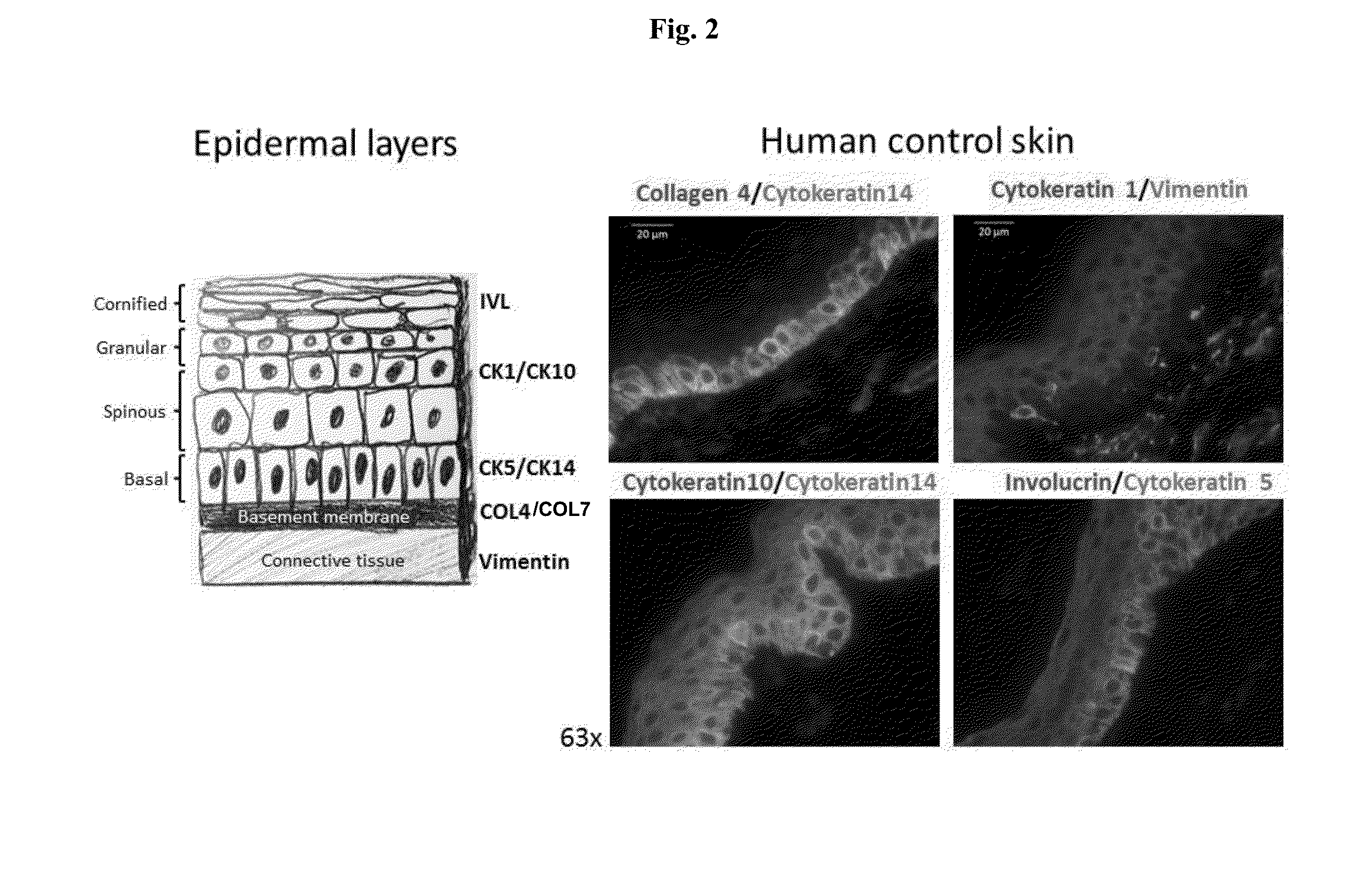Engineered three-dimensional skin tissues, arrays thereof, and methods of making the same
- Summary
- Abstract
- Description
- Claims
- Application Information
AI Technical Summary
Benefits of technology
Problems solved by technology
Method used
Image
Examples
example 1
Bioprinting Full Thickness Skin Tissue by Continuous Deposition Using Dermal Bio-Ink Containing Alginate and Epidermal Bio-Ink Deposition by Aerosol Spray Method
Procedures
[0175]Bio-ink was generated by a cellular mixture of 100% primary adult human dermal fibroblasts (HDFa) in 6% gelatin and 1% alginate (Novogel® 3.0) in a concentration of 150 million cells per milliliter. Three-dimensional bio-ink constructs were printed by continuous deposition using the Novogen Bioprinter® platform in a 4 mm×4 mm×0.5 mm base sheet with a 1 mm wall bordering the top to create a dermal structure resembling a cup. One tissue construct was printed per transwell in a 6 well plate. The transwell printing surface contained a polytetrafluoroethylene (PTFE) membrane coated with equimolar mixture of types I and III collagen (bovine) with pores 3 μm in size. Following printing, constructs were immediately cross-linked by submerging in 5 ml of 50 mM calcium chloride for 2-5 minutes. Calcium chloride was then...
example 2
Bioprinting Full Thickness Skin Tissue by Continuous Deposition Using Dermal Bio-Ink Containing Gelatin and Epidermal Bio-Ink Containing Cell Paste
Procedures
[0177]Bio-ink was generated by a cellular mixture of 100% primary adult human dermal fibroblasts (HDFa) in 6% gelatin (Novogel®) in a concentration of 150 million cells per milliliter. Three-dimensional bio-ink constructs were printed by continuous deposition using the Novogen Bioprinter platform in a 4 mm×4 mm×0.5 mm base sheet with a 1 mm wall bordering the top to create a dermal structure resembling a cup. One tissue construct was printed per transwell in a 6 well plate. The transwell printing surface contained a polytetrafluoroethylene (PTFE) membrane coated with equimolar mixture of types I and III collagen (bovine) with pores 3 μm in size. Epidermal cell paste containing a mixture of 95% primary adult human epidermal keratinocytes (HEKa) and 5% primary adult human epidermal melanocytes (HEMa) was then printed on top of the...
example 3
Additional Example of Bioprinting Full Thickness Skin Tissue by Continuous Deposition Using Dermal Bio-Ink Containing Gelatin and Epidermal Bio-Ink Containing Cell Paste
Procedures
[0179]Bio-ink was generated by a cellular mixture of 100% primary adult human dermal fibroblasts (HDFa) in 8% gelatin (Novogel®) in a concentration of 100 million cells per milliliter. The cell: gelatin ratio was altered to reduce the cellular density of the dermal sheet to better mimic dermal tissue in native skin. Three-dimensional bio-ink constructs were printed by continuous deposition using the Novogen Bioprinter® platform in a 4 mm×4 mm×0.5 mm base sheet to create a dermal structure resembling a sheet. One tissue construct was printed per transwell-in a 6 well plate. The transwell printing surface contained a polytetrafluoroethylene (PTFE)-membrane coated with equimolar mixture of types I and III collagen (bovine) with pores 3 μm in-size. Epidermal cell paste containing a mixture of 100% primary neona...
PUM
 Login to View More
Login to View More Abstract
Description
Claims
Application Information
 Login to View More
Login to View More - R&D
- Intellectual Property
- Life Sciences
- Materials
- Tech Scout
- Unparalleled Data Quality
- Higher Quality Content
- 60% Fewer Hallucinations
Browse by: Latest US Patents, China's latest patents, Technical Efficacy Thesaurus, Application Domain, Technology Topic, Popular Technical Reports.
© 2025 PatSnap. All rights reserved.Legal|Privacy policy|Modern Slavery Act Transparency Statement|Sitemap|About US| Contact US: help@patsnap.com



